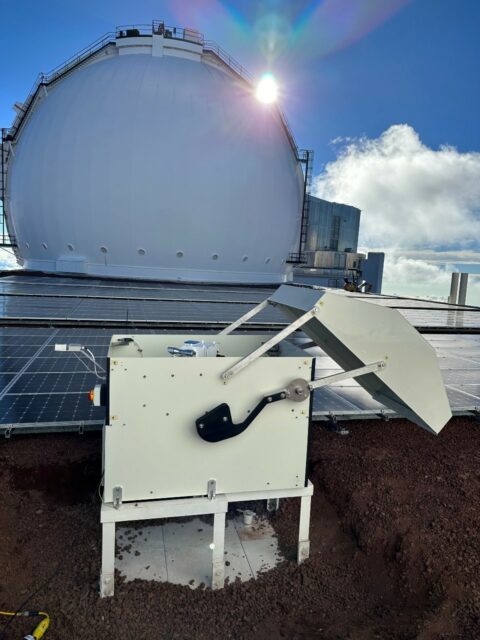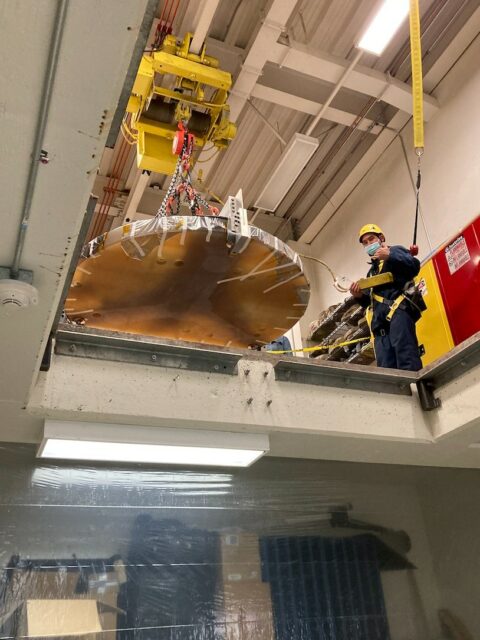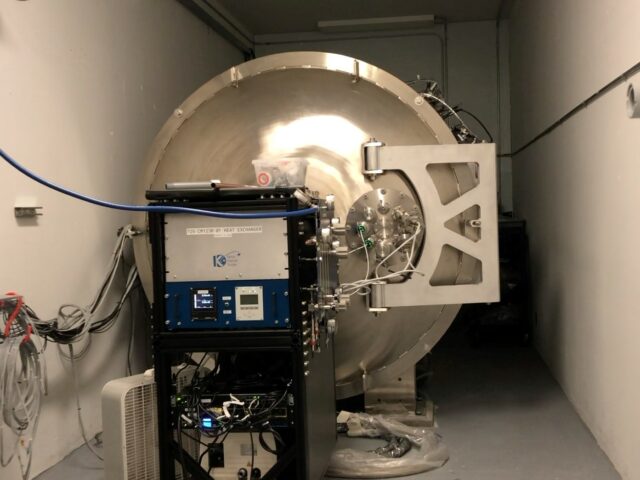
It’s a question that has perplexed scientists since the dawn of time: Are we alone? Perhaps elsewhere in the universe a planet exists just like Earth, with water and life as we know it.
A new instrument at Hawaii’s W. M. Keck Observatory is taking us one step closer to finding out. The Keck Planet Finder (KPF)—which began capturing data from the sky in November—will be able to find and study Earth-like planets by looking at their host stars. As planets orbit around their stars, they produce a gravitational “tug” that scientists can measure to better understand a planet’s mass and density, known as the radial velocity method.
The search for exoplanets in the universe isn’t new. In addition to the radial velocity method, other ways of trying to find exoplanets have included the transit technique, microlensing and direct imaging. Thus far, more than 5,000 planets have been found, according to NASA, which estimates that our galaxy likely contains hundreds of billions of exoplanets. However, the search for planets that look a lot like Earth has been difficult—not because of the preciseness of telescopes and other instruments we use to find them but because of stellar activity.
“The big challenge of the decade for the field is how to overcome stellar activity,” says Ryan Rubenzahl, a Caltech astrophysics graduate student who is working on the KPF. Extraneous factors, such as sunspots, can create a false positive.
“There’s been a lot of discovery papers claiming they found a planet, but it turns out there is no planet, it’s just stellar activity,” Rubenzahl says. “The instruments so far have gotten so precise that right now, we’re not really limited in our ability to discover new planets by the precision of the instrument. Instead, we’re limited by noise that comes from different physical processes on the surfaces of the stars themselves.”
Finding Earth-like planets
KPF helps address the problem of false signals. One way is via the solar calibrator, a device that sits atop the roof of Keck Observatory and measures our own sun to get a data set just like we would in studying any other star. Existing data on the sun already collected by NASA satellites and other ground-based observatories is helping build a more complete picture.
“The idea is to use that wealth of data and try to make that connection between what’s going on with a star and how that manifests in our data and then hopefully apply that knowledge to observation of stars hosting exoplanets,” says Rubenzahl, whose thesis will focus on learnings from the solar calibrator. “[Our sun is] the only star that you can actually resolve where all the spots are, so you actually know what’s going on in the sun. We have this growing network now of solar feeds spread out across the planet, which means we can observe the sun almost in a full, 24-hour loop by switching from one instrument to the next.”
Keck’s solar calibrator is working in tandem with the KPF, an instrument conceived a decade ago and commissioned in November 2022. KPF operates on one of Keck’s existing telescopes and detects planets by looking for the slight gravitational tug between a star and its planet. The smaller the planet, the smaller the wobble. KPF has the precision to detect a planet the size of Earth or smaller in the habitable zone of the universe, where liquid water can exist on the surface of a planet.
Built for stability
A key innovation in KPF is the use of a special material called Zerodur, a special glass ceramic mixture that helps in the detection of smaller planets.

Zerodur makes KPF extremely precise in its measurements because of its thermal stability. Rubenzahl says that Zerodur is “several thousand times better than stainless steel” and thus makes “the instrument as stable as possible.” This means that when researchers detect a faint wobble between a planet and its sun, it can be attributed to the wobble between the planet and the star and not to the instrument doing the measurements.
Josh Walawender, an astronomer at the W.M. Keck Observatory, says that another benefit aiding consistency is that all the different pieces of KPF’s spectrograph (which separates light into wavelengths) are made from the same piece of Zerodur. Having this uniformity is crucial.
“This means that each piece of the spectrograph has exactly the same properties,” he says. “There’s no variation because the Zerodur in one piece was made on one day and the Zerodur in another piece was made on another day with ever so slightly different properties.”
Another perk of the KPF is its location at the observatory, where there is little light pollution and two large twin telescopes on top of Mauna Kea (at 13,600 feet). These telescopes are among the largest in the world with diameters of 10 meters each (around 32 feet). As such, the KPF will be able to detect a star a hundred light years away moving at an astonishing rate of just 30 centimeters a second, which suggests that the planet has a weak tug on its host star. By comparison, an older planet-hunting instrument still in existence at Keck, the High-Resolution Echelle Spectrometer, can detect stellar motions of 200 centimeters/second.
Will we find an ‘Earth twin’ in our lifetime?
This spring, the KPF will begin hunting for planets. Scientists will look at stars that are close to Earth to determine whether they have smaller planets that haven’t been visible until now.
“A science team might look at a star with known planets but use the higher precision of KPF to see if there are smaller planets which we couldn’t see before,” Walawender says. “The beauty of having the instrument at a facility such as Keck is that it will be accessible to many researchers, each with their own great ideas of how to use it and which stars to look at.”
I’m confident we will find Earth-sized planets which orbit in the habitable zone of their parent star in the coming decades.
—Josh Walawender, astronomer, W.M. Keck Observatory
Rubenzahl has four nights of observation scheduled with KPF, where he will examine a planet as it transits its star. His interest is in planets with unusual orbits, such as those that travel backward or travel around the poles of the star, rather than the equator. “Something must be going on that’s tilting orbits, maybe through dynamics with another planet or another star,” he says.

In addition, researchers will examine planets already discovered by NASA’s Kepler Space Telescope. Now retired, the telescope was launched into space in 2009 to detect Earth-sized exoplanets in the habitable zone as they passed in front of their stars and blocked the light.
Rubenzahl and Walawender are both optimistic that we’ll find an “Earth twin” in our lifetime. “I’m confident we will find Earth-sized planets which orbit in the habitable zone of their parent star in the coming decades,” Walawender says.
Rubenzahl believes the greatest chance for it to happen is via a collaborative approach. One possible scenario—researchers will discover a planet with a TESS satellite, then the KPF will measure the planet’s mass, and then the James Webb Space Telescope will measure the planet’s atmosphere. “It’ll definitely be something akin to that, which will build up enough information to be able to declare the first habitable planet.”
Says Rubenzahl, “I’m very excited for what we’re going to find in the next five to 10 years, especially now that we have the KPF to create a more complete picture of an exoplanet system.”
Lead image courtesy of Greg Rakozy/Unsplash.


By Betsy Vereckey, contributor